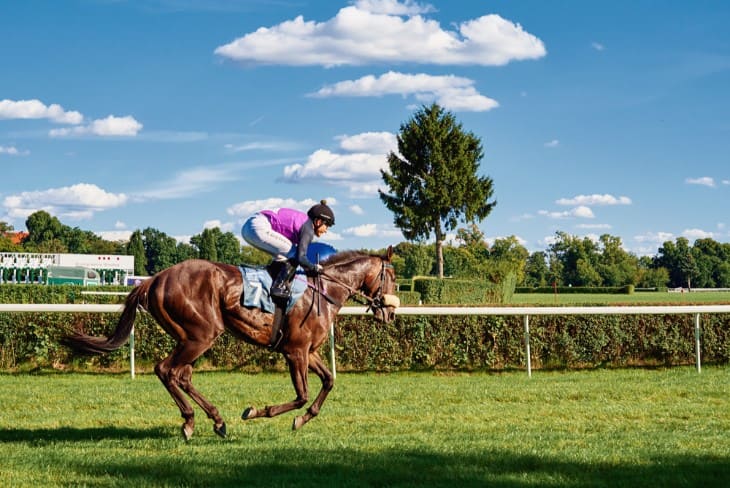- Key Strategies for Successful Lay Betting
- Technological Advances and Their Impact on Lay Betting Strategies for the Grand National
- Identifying the Ideal Participant for Lay Betting in the Grand National
- Analysing Past Grand National Outcomes for Lay Betting
- Risk Management in Lay Betting
- Tools and Resources for Lay Bettors
- The Role of Betting Exchanges in Lay Betting
- Conclusion
Lay betting represents a unique approach within the betting world, offering an alternative to the traditional back bet where a bettor would wager on a particular outcome to happen. In contrast, lay betting involves betting against a specific outcome. For instance, in the context of horse racing, rather than betting on a horse to win, one would bet on it not to win the race. This form of betting is primarily facilitated by betting exchanges rather than traditional bookmakers, allowing individuals to act as the bookie.
The mechanics of lay betting are straightforward yet require a strategic mindset. When you place a lay bet, you are essentially offering odds to other punters, hoping that the selected outcome does not occur. Your profit is equivalent to the stake of the back bet if the outcome does not happen. However, if the outcome does happen, you are liable to pay out the winnings, which are calculated by multiplying the backer's stake by the odds you offered. This dynamic introduces a new layer of strategy to betting, as one must carefully consider the likelihood of an outcome not happening rather than happening.
Key Strategies for Successful Lay Betting
Lay betting represents a unique opportunity within the betting world, offering a method to bet against the winning of a horse, rather than for it. This strategy requires a deep understanding of both the market and the specific dynamics of the Grand National. Bettors must assess a variety of factors, including the horse's form, the impact of the race conditions on its performance, and the jockey's ability to navigate the demanding Aintree course.
A successful strategy for lay betting on the Grand National involves meticulous research and disciplined risk management. Bettors should focus on identifying overvalued horses—those whose odds of winning are perceived to be lower than their actual chances. This often involves looking for horses that have been hyped by the media or have shown inconsistency in their performance leading up to the race. By placing lay bets on these horses, bettors position themselves to profit if, as expected, the horse fails to win. Additionally, staying informed about late withdrawals and changes in race conditions can provide critical advantages in the fast-moving betting market.
Technological Advances and Their Impact on Lay Betting Strategies for the Grand National
The advent of technology has markedly transformed the landscape of lay betting, especially in the context of prestigious horse racing events like the Grand National.
Firstly, betting software has become a cornerstone for serious lay bettors. These sophisticated programs allow for the analysis of vast amounts of data, including horses' performance histories, track conditions, and betting market trends. They can process this information much faster than manual analysis, enabling bettors to identify undervalued horses to lay against more efficiently. The software often includes features for automated betting, where bets can be placed based on predetermined criteria, thus allowing bettors to take advantage of fleeting opportunities in the betting exchange markets.
Mobile technology has also played a pivotal role. With the proliferation of smartphones and tablets, bettors can now access betting exchanges and lay betting tools on the go. This mobility ensures that bettors are always connected to the market, ready to make timely decisions based on the latest information. It also facilitates live betting strategies, where bettors lay bets on horses during the race based on real-time performance and odds changes.
Furthermore, social media and online forums have emerged as vital resources for lay bettors. These platforms offer communities where bettors can exchange tips, strategies, and insights. The collective intelligence found in these communities can be invaluable, especially for newcomers to lay betting. Experienced bettors share their approaches to analyzing races and managing bankrolls, which can help in refining one’s lay betting techniques.
Additionally, the integration of artificial intelligence and machine learning into betting software represents the frontier of technological advancements impacting lay betting. These technologies can predict outcomes with a higher degree of accuracy by learning from patterns in data that would be imperceptible to humans. As these technologies continue to evolve, they promise to further refine the precision of lay betting strategies.
However, it's important to note that while technology offers numerous advantages, it also presents challenges. Dependence on technology can sometimes lead to overlooking the nuanced understanding of horse racing that comes from experience and intuition. Moreover, the dynamic and unpredictable nature of the Grand National means that no technological tool can guarantee success.
Identifying the Ideal Participant for Lay Betting in the Grand National
Lay betting requires a person who is analytical, possessing the ability to dissect vast amounts of data to make informed decisions. It suits those with a strong understanding of horse racing dynamics and an appreciation for the complexities of the sport.
An ideal participant is also risk-aware, not risk-averse; understanding that lay betting involves calculated risks and being prepared to manage these risks effectively. Discipline is crucial, as successful lay betting demands strict bankroll management and the ability to stick to a pre-determined strategy even in the face of losses.
Furthermore, adaptability is key. The ability to adjust strategies based on evolving race conditions, odds, and other variables is essential for staying ahead in the dynamic environment of horse racing betting.
Lastly, successful lay bettors are typically patient and persistent, recognizing that profitability may come gradually and requires consistency over time. This type of gambling is not suited for those seeking quick wins or unable to handle the psychological pressure of potential losses.
In essence, lay betting in the Grand National is most fitting for individuals who combine analytical skills with a disciplined, risk-managed approach to betting, and who possess the resilience and adaptability to navigate the complexities of horse racing.

Analysing Past Grand National Outcomes for Lay Betting
The process of lay betting requires a comprehensive analysis of past races, particularly in an event as unpredictable as the Grand National. Studying previous outcomes not only helps in understanding which types of horses are less likely to win but also in identifying patterns that could influence betting decisions. For instance, analysing the performance of favourites versus outsiders over the years can offer insights into the race's inherent unpredictability.
Key factors to consider when analysing past Grand National outcomes include:
- Favourites vs. Outsiders: Historically, the Grand National has seen a mix of favourites and long shots winning the race. This variance can guide lay bettors in deciding which horses might be overvalued by the market.
- Horse Age and Experience: The age and racing experience of past winners can indicate optimal conditions for success in the Grand National. Younger horses may lack the stamina or experience, whereas older horses might be past their prime.
- Jockey Experience: The role of the jockey is crucial in the Grand National. Experienced jockeys who know how to navigate the challenging course can significantly impact a horse's chances of success.
- Weather and Ground Conditions: The weather on race day and the condition of the track have a significant impact on the outcome. Horses that perform well in softer ground conditions might struggle if the track is firmer, and vice versa.
Risk Management in Lay Betting
Effective risk management is paramount in lay betting, especially given the Grand National's unpredictability. This involves setting clear limits on the amount of money risked on any single bet and having a systematic approach to selecting bets. Diversification is another crucial strategy; by spreading bets across multiple outcomes, bettors can minimise their exposure to any single loss.
Two key components of risk management in lay betting are:
- Bankroll Management: Keeping a disciplined approach to how much of one's bankroll is risked on individual bets helps in sustaining a betting strategy over the long term. It is generally advisable not to risk more than a small percentage of the total bankroll on a single bet.
- Odds Selection: Choosing the right odds to lay at is critical. Betting against highly unlikely outcomes may offer lower risk but also provides smaller returns. Conversely, laying against slightly overvalued favourites can offer better returns but comes with higher risk. Balancing this risk-reward ratio is a skill that can be developed over time through careful analysis and experience.
In both of these chapters, the emphasis on diligent research, analysis, and disciplined betting strategies highlights the complexity and nuanced approach required for successful lay betting in the context of the Grand National.

Tools and Resources for Lay Bettors
For individuals engaged in lay betting, leveraging various tools and resources can significantly enhance decision-making processes and outcomes. These tools are designed to provide bettors with comprehensive data, insights, and analysis to inform their betting strategies. Key resources include:
- Betting exchanges: Platforms such as Betfair and Betdaq offer the necessary infrastructure for lay betting, providing a marketplace for bettors to place lay bets against other users.
- Racing databases and form guides: Websites and software that compile detailed histories of horse performances, jockey statistics, and race conditions. These databases allow bettors to conduct thorough research and analysis on potential lay bets.
- Betting calculators: Tools that help bettors calculate potential profits and losses from lay bets, taking into account the odds and their stake. These calculators are essential for effective risk management.
- Expert forums and tipster services: Communities where experienced bettors and professionals share insights, tips, and strategies. While the quality of advice can vary, well-regarded forums and services can offer valuable perspectives.
Utilising a combination of these tools can provide lay bettors with a more informed and nuanced understanding of the betting landscape, enabling them to identify valuable lay betting opportunities and manage their risks more effectively.
The Role of Betting Exchanges in Lay Betting
Betting exchanges have revolutionised the world of lay betting, offering a platform for individuals to bet against outcomes directly with other bettors, rather than traditional bookmakers. These exchanges have been instrumental in popularising lay betting, providing the transparency, liquidity, and tools necessary for this form of wagering to thrive. The core features of betting exchanges include:
- Market-driven odds: Unlike traditional bookmakers, odds on betting exchanges are determined by the market, reflecting the collective opinions and actions of its participants. This often leads to more competitive and fair odds.
- Ability to lay bets: Betting exchanges are unique in that they allow users to both back and lay outcomes, providing more flexibility in betting strategies and the opportunity to profit from predicting non-winners.
- Trading opportunities: Exchanges facilitate trading positions on outcomes before and during events, allowing bettors to lock in profits or cut losses as the market fluctuates.
The dynamic nature of betting exchanges, combined with the strategic depth offered by lay betting, creates a compelling environment for bettors seeking to exploit discrepancies in market odds. By effectively using exchanges, lay bettors can achieve greater control over their bets and potentially secure more consistent returns.
Conclusion
Lay betting offers a distinctive approach within the betting landscape, particularly in the context of the Grand National. It demands not only an understanding of horse racing and betting markets but also a strategic mindset focused on identifying overvalued opportunities. lay betting in the Grand National presents a compelling opportunity for those willing to invest the time and effort to understand its complexities. Through careful planning, analysis, and execution, lay betting can be a rewarding strategy for the informed bettor.








